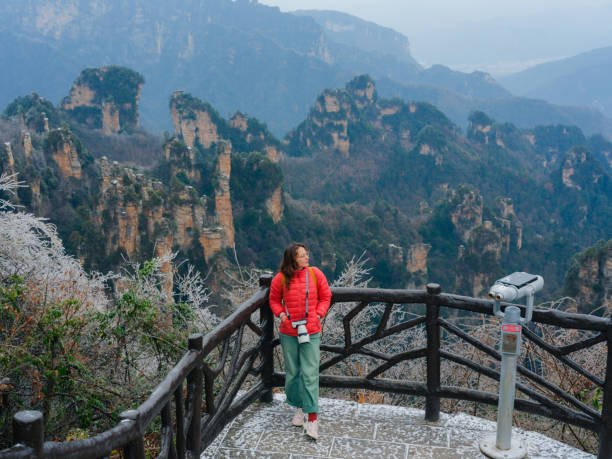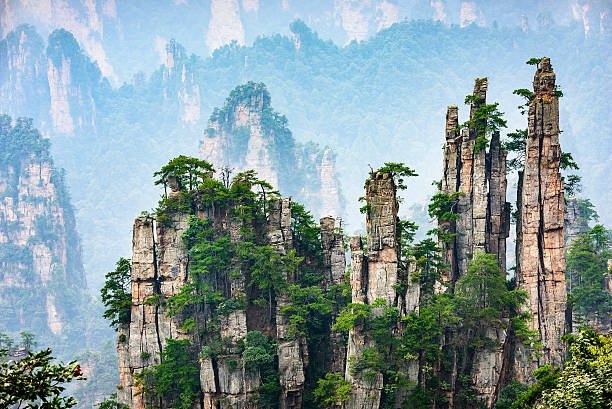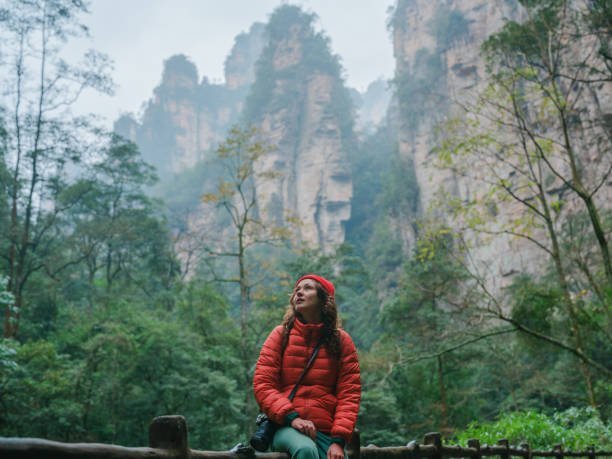
In the heart of China’s Hunan Province lies a landscape that defies the imagination—a place where nature has sculpted a masterpiece so surreal it seems to belong to another world. Welcome to Zhangjiajie National Forest Park, the real-world inspiration behind the floating mountains of Pandora from the movie Avatar. Beyond its breathtaking beauty lies a tapestry of mystery and intrigue. Today, we dive into the scientific marvels and ancient myths that cloak these towering pillars. What forces of nature conspired to create them? Join us as we unravel the secrets of Zhangjiajie.
The story begins millions of years ago when this area was submerged under a vast ocean. Over time, sediment from rivers accumulated on the ocean floor, compressing into sandstone under the immense pressure of the water above. But the journey from a flat sandstone bed to these astonishing columns is a tale of relentless battle against the elements. As the tectonic plates shifted, they pushed the land upwards, draining the ocean and exposing the sandstone to the open air for the first time.
Erosion then took center stage in this geological drama. Rainwater, slightly acidic from absorbed carbon dioxide, began to seep into cracks in the sandstone. Over millennia, this acid rain carved out deep gorges, leaving behind the pillars we see today. But why are these pillars so tall and thin? The secret lies in the unique composition of the sandstone itself. Unlike the sandstone found in most parts of the world, Zhangjiajie’s rock is incredibly hard and resistant to weathering, allowing it to maintain its majestic height even as the forces of erosion nibble away at its base.

What’s fascinating about Zhangjiajie is not just the sheer size of these pillars, but the resilience of the rock. It’s a perfect storm of geological conditions that has created something truly magnificent. But Zhangjiajie’s mysteries aren’t limited to its rocks. This ancient landscape is a sanctuary for a myriad of plant and animal species, some of which are found nowhere else on Earth. The dense forests that cloak the pillars are a reminder of our planet’s primordial past—a living link to an era long gone.
The park is also steeped in myth and legend. Local stories speak of immortals who inhabited these mountains, of fierce dragons and benevolent spirits. Each pillar has its own tale, turning the landscape into a grand open-air library of folklore.
These mountains are not just rock and vegetation; they are the embodiment of our ancestors’ spirits, each one a guardian of their land’s history and culture. As day turns to night in Zhangjiajie, the mystery of these ancient pillars deepens. The interplay of light and shadow, the mist that dances between the peaks—all add to the allure of this mystical place.

So what truly created Zhangjiajie? Was it the slow but relentless force of nature, or is there a touch of the divine in these soaring monoliths? Perhaps it’s a bit of both. In the end, Zhangjiajie remains a place where science and legend intertwine—a reminder of the mysteries that still lie at the heart of our remarkable planet.
*This Blog post is originally written by me on onthenode.com
Check out My post
Also visit My Profile
Pictures are taken from istock
Regrds: Kiara
Have a nice day ❤️